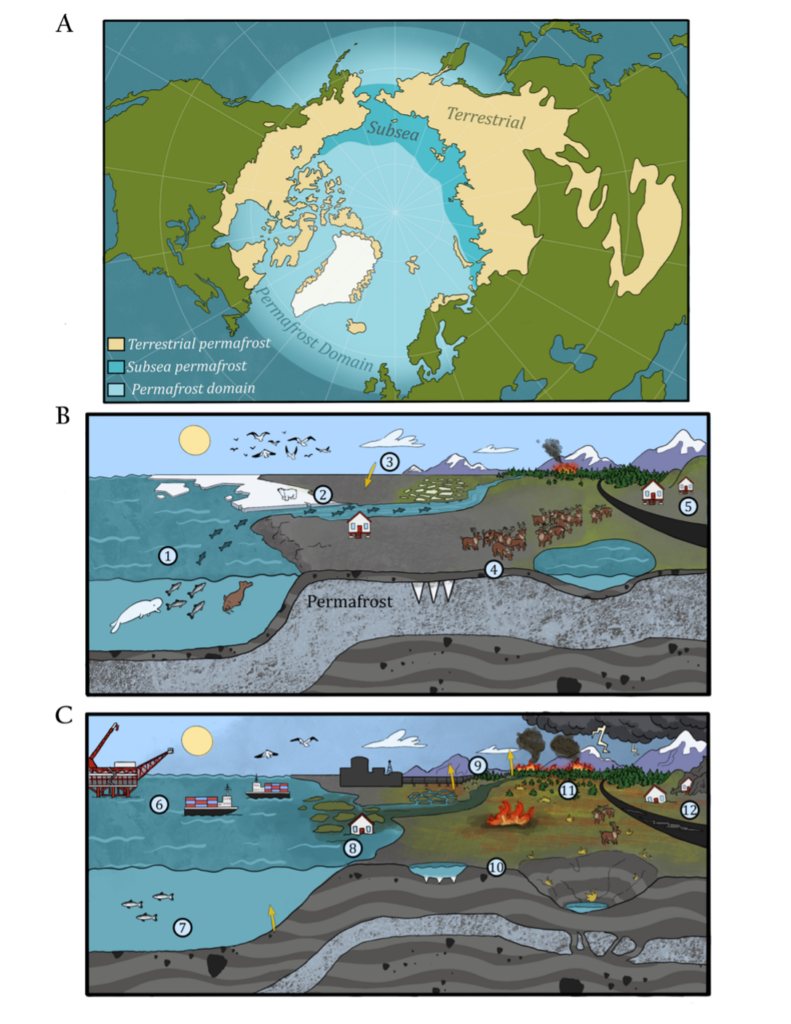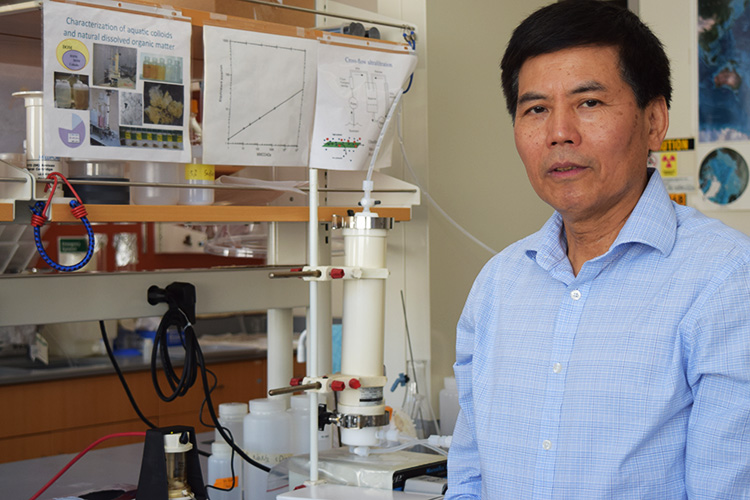Permafrost affects only 10 percent of the Earth’s surface—mainly in the far north. However, changes in these distant regions should concern us all. Rapid warming is causing cascading changes in permafrost regions that are threatening biodiversity, the stability of global climate, and the wellbeing of over 1.5 billion people.
“We must stop fossil fuel emissions to protect permafrost ecosystems,” says Laodong Guo, PhD, a professor in the School of Freshwater Sciences at University of Wisconsin-Milwaukee and an associate editor of Frontiers in Environmental Science – Biogeocheical Dynamics. “Preserving permafrost ecosystems is crucial to humanity. Faster decarbonization is essential.”
Guo and Benjamin Abbott, PhD, a professor at Brigham Young University conceived of a study analyzing permafrost that was published in Frontiers in Environmental Science in June 2022. A team of 33 international experts, including Guo and Abbott, summarized more than 200 recent studies about how climate change and permafrost are interacting.
The science and policy experts focused on four key permafrost regions: the Arctic Ocean, the Boreal Forest, the Arctic Tundra, and the Tibetan Plateau (see Figure 1 below). Together called the permafrost domain, these areas are especially vulnerable to climate change because of their dependence on ice. This is a problem because they are warming three-times faster than the global average, with many regions already 2 to 5 degrees Celsius warmer than before the Industrial Revolution.
The study estimates that the permafrost domain contains between 2.5 and 3 trillion tons of organic carbon; more than all of Earth’s other life, soil, and atmosphere combined. As this plant and animal material begins to decompose, microorganisms produce CO2, CH4, and N2O, the three most important long-lived greenhouse gases. Under more extreme warming scenarios, permafrost rot could produce hundreds of billions of tons of emissions.
The study reveals that dramatic changes are progressing decades faster than expected. Sea ice and snow cover have plummeted, storms have intensified, soils and coastlines are eroding, and wildfires are burning through the winter. The experts insist that a “time bomb” scenario of runaway greenhouse gas release is unlikely. Rather than an abrupt belch, greenhouse gas release from the permafrost domain could last hundreds of years and occur across millions of square kilometers. This results in a slower climate feedback but also makes it extremely difficult to stop.
“The faster we reduce emissions, the more the permafrost domain remains stable and healthy,” Guo says.
As important as permafrost climate feedbacks are, the experts emphasize that the permafrost domain is more than just “a pile of greenhouse gas precursors.” It is home to tens of millions of Indigenous and immigrant people, and it supplies water and resources to billions more, largely around the Tibetan Plateau. The authors propose that policy action is needed both within and beyond the borders of the permafrost domain. They advocate for the rapid reduction of fossil fuel use globally and support for Indigenous and immigrant permafrost communities who are already dealing with the consequences of climate change.
“If we fail to protect permafrost ecosystems, the consequences for human rights, biosphere integrity and global climate will be severe,” they write. “The policy implications are clear: The faster we reduce human emissions and draw down atmospheric CO2, the more of the permafrost domain we can save.”
Citation: Benjamin W. Abbott, Joanna Carey, Jessica G. Ernakovich, Jennifer Frederick, Laodong Guo, Gustaf Hugelius, Paul J. Mann, Raymond Lee, Michael M. Loranty, Robie Macdonald, Susan Natali, David Olefeldt, Abigail Rec, Martin Robards, Verity G. Salmon, Christina Schädel, Ted Schuur, Sarah Shakil, Arial Shogren, Jens Strauss, Suzanne Tank, Brett F. Thornton, Rachael Treharne, Merritt Turetsky, Carolina Voigt, Yuanhe Yang, Jay P. Zarnetske, Qiwen Zhang, Scott Zolkos (2022). We must stop fossil fuel emissions to protect permafrost ecosystems. Frontiers in Environmental Science 10:889428. doi:10.3389/fenvs.2022.889428

